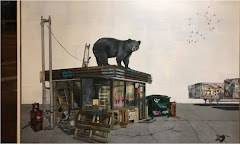
My first schoolhouse was a small one in Southern Saskatchewan. Grades 1-4 were housed in one room and 4-8 in another.
My first teacher was Mrs. Hellman, a perpetually positive woman who used the first half hour after lunch to read us all a story.
It was probably a smart move, since us kids were either pooped from an hour of playing outside or snoozing off our thermoses of Campbell’s soup and baloney or Velveeta sandwiches.
Thus, she began working her way through “Lassie Come Home” a chapter at a time. And one afternoon, she set the novel on a stool before us Grade Ones asking us to draw a picture from the story while she did Arithmetic with the older kids.
I was already pretty handy with crayons and set to work recreating the book’s cover while others of my cohort depicted one of Lassie’s hair raising adventures.
When it was once again Grade One’s turn, Mrs. Hartman returned to assess either our imagination quotient or story comprehension or whatever and became very upset with me.
I felt I’d crafted not a bad rendition of the Scottish Highlands and thought my dog pose was particularly accurate. But she accused me of tracing it, then realized that wasn’t possible and became a touch amazed at what I’d accomplished.
This led to a conversation with my parents suggesting I had an artistic bent which oughta be pursued -– and the rest, shall we say, is history.
Now I’m not telling that story as some anecdote of my time as a child prodigy. Because I wasn’t that at all.
But since there were no such things as art galleries, art schools or even libraries in my part of the world, my artistic learning curve involved what was around me – primarily comic books.
I became a comic book copy cat. And over time, spending a lot of time between the covers of comic books taught me the rudiments of visual story telling.
It’s identical to what a lot of kids (and not so much kids anymore) do these days in finding their creative footing. They copy. Only now they copy from a myriad of media using After Effects, Photoshop and Digital cameras.
I hear a lot of artists bemoan this new age of copying. They’re annoyed by fan fiction. They’re irked by intrusions on their copyrights. And they’re aghast that some of these kids get movie deals from a 2 minute Youtube clip that they haven’t achieved despite hundreds of hours of Prime Time programming.
I look at it a little differently. While I once sympathized with the lot of those breaking into the business today having it so much harder than I did –- I now wonder what I might’ve achieved if the technologies around us had been available to me at their age.
How many fewer pointless pitch sessions would I have endured if crowdfunding had existed? How much easier would it have been to audition for or have a script read by a wider range of producers? How many stories could I have shot, cut and distributed myself instead of seeing them executed as a lesser vision by those not as committed to the work?

Last week, two Copycat films appeared on the Internet. One, “A Smallville Man” was created by LA visual artist Mauricio Abril which tread on several copyrights, including those of DC Comics and iconic rockers the Foo Fighters.
An animated gem intended merely to showcase Abril’s talents it appended the following disclaimer: “This is a not-for-profit independent film honoring the legacy of Superman and the Foo Fighters. It is in no way meant to officially represent DC Comics, Warner Bros, Foo Fighters, or RCA Records. Superman and all related elements are trademarks of and copyrights of DC Comics. "Walk" was written by the Foo Fighters and published by RCA Records in 2011's "Wasting Light."”
And all those copyright violated folks not only left Abril alone, they actually championed him. “Superman: Man of Steel” artist Jon Bogdanove described Abril as somebody who "so gets it."
Less generously received was LA producer Adi Shankar’s reboot of “The Mighty Morphin’ Power Rangers” franchise entitled “Power/Rangers” which debuted to 6 Million hits its first day before a forced takedown edict was issued to Youtube and Vimeo by rights owner Saban Entertainment.
A darker, dystopian take on the original, not unlike what Christopher Nolan did to “Batman”, Shankar with director Joseph Kahn, had intended the piece as both an homage and an opportunity to flex their creative chops. And they included a similar “not-for-profit” disclaimer on the film itself.
After a day or two of nasty lawyer letters, Saban seemed to relent, belatedly realizing perhaps, that Shankar had stoked some interest in a title most haven’t paid much attention to in a while.
And while some have suggested “Power/Rangers” tests the future of Internet freedom, for me it exemplifies how some of us have to shift our perspective on the works that we “own”.
Yes, Creatives deserve to be rewarded for their creations. And God knows its so hard to get an honest accounting from a lot of people in our various copyright worlds. Therefore, we resent the idea of others profiting from what we haven’t.
And remedying that issue (especially in Canada, where government agencies get financial reports that artists don’t) might go a long way to prying our cold, dead fingers from the throats of kids just trying to make their mark.
I have no idea who illustrated the “Lassie Come Home” title I copied. But without their work and a teacher who didn’t report me to the Copyright police, I wouldn’t be where I am today.
And maybe that’s a model we should all practice. Because “Ars Longa, Vita Brevis” as the man said. And isn’t it better if some of the carrying forward were done by somebody who “so gets it”?
A SMALLVILLE MAN
POWER/RANGERS




No comments:
Post a Comment